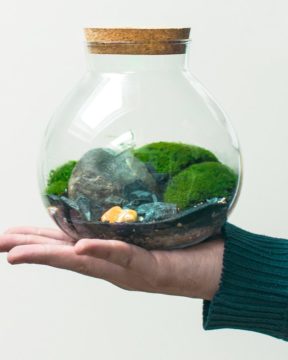Franco and Robson in BBC:
 The roots of the modern terrarium can be traced to a 19th Century experiment by Nathaniel Bagshaw Ward, an English doctor who also studied botany and entomology. Ward’s interest seems to have arisen from a journey to Jamaica as a 13-year-old boy, when he fell in love with the exotic plant life. Growing up, he developed a large collection of specimens, but he was disappointed to find that many species – particularly the ferns and mosses – failed to thrive in his east London garden, thanks, in large part, to the air pollution of the city. The UK was, after all, in the midst of the Industrial Revolution, meaning that his house was “surrounded by, and enveloped in, the smoke of numerous manufacturies”, which brought coal, ash and other toxic chemicals into contact with his precious plants.
The roots of the modern terrarium can be traced to a 19th Century experiment by Nathaniel Bagshaw Ward, an English doctor who also studied botany and entomology. Ward’s interest seems to have arisen from a journey to Jamaica as a 13-year-old boy, when he fell in love with the exotic plant life. Growing up, he developed a large collection of specimens, but he was disappointed to find that many species – particularly the ferns and mosses – failed to thrive in his east London garden, thanks, in large part, to the air pollution of the city. The UK was, after all, in the midst of the Industrial Revolution, meaning that his house was “surrounded by, and enveloped in, the smoke of numerous manufacturies”, which brought coal, ash and other toxic chemicals into contact with his precious plants.
The solution came in 1829 from one of Ward’s entomological experiments. He had been trying to hatch the chrysalis of a sphinx moth, buried in some moist mould within a covered bottle. The water, he noticed, would evaporate and then condense on the side, before returning to the mould – seemingly recreating the basic flow of the Earth’s weather systems. After a few days, Ward was surprised to find a tiny fern had begun to grow in the sealed ecosystem.
More here.
